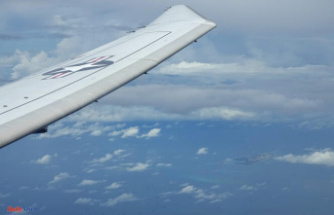Left and right-wing redraw the east-west border of Germany
The results of the elections this Sunday in Germany recreate the borders between East and West 27 years after their reunification. In the former GDR the ultraright doubles results with respect to the Länder of the FRG. ...

The results of the elections this Sunday in Germany recreate the borders between East and West 27 years after their reunification. In the former GDR the ultraright doubles results with respect to the Länder of the FRG.
The top charts show how the voters of the former Communist Republic are more favorable to the left than their western neighbors: Die Linke, the party denomination in Germany, gets 17% in the east for only 7% in the West. The rest of the political forces leave better stops in the West than in the east, but the difference of their results between the two territories is lower than in the cases of the alternative by Germany (AfD) and the Greens.
The Christian Union coalition achieves its best results in the fief of the CSU, Bavaria, followed by the Rhineland-Palatinate, with almost 36% of votes. The federal capital, Berlin, passes bill to the Christian. The inverse takes place with the left, which gets its maximum in the federal capital and the minimum in Bavaria.
The Social Democratic SPD achieves the best result in Lower Saxony and the worst in Saxony, which is the most favorable land to the ultraright of AfD with more than one of every four votes, vis-a-vis Hamburg, where the Liberals of the FDP do not reach 8% of votes , which go back after the hecatomb that suffered in 2013, achieve the best result in North Rhine-Westphalia and the worst in Mecklenburg-Western Pomerania.
Candidates of Die Linke (left) and alternative by Germany (right) during the electoral night. AFP/AFP (John MacDougall)
NEWS HEADLINES
1
Serrat: "Those who brand me as a fascist do not know...
2
The endless journey of the Bogotá Metro
3
Arrested in Russia a couple of cannibals who could...
4
Not Just Cheap, These Are Five Points Required In...
5
DIY personal finance management – Dos and Don’ts...
6
Catalan students go on strike in favor of referendum
7
What happens for a minute on the internet?
8
The best Song of 2017
9
Diego Costa: "I really want to start contributing"
10
Sevilla Golea al Maribor with a Ben Yedder stellar
BREAKING NEWS
SURVEYAll Surveys











